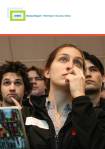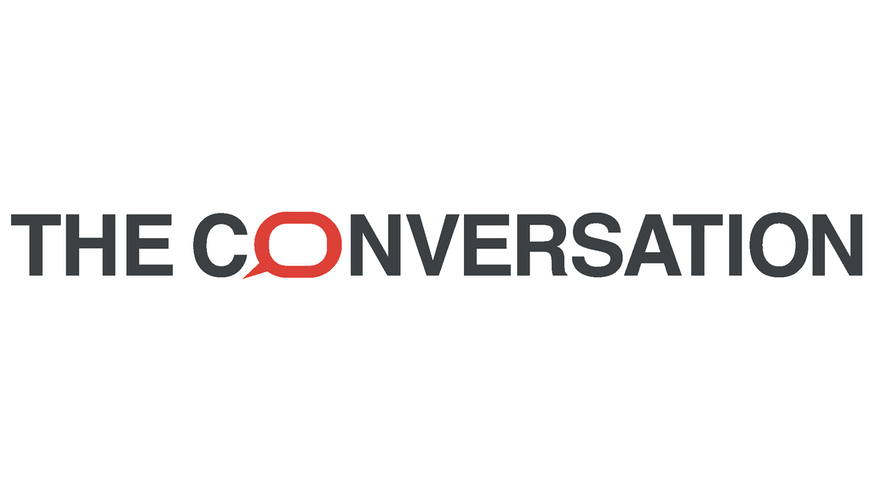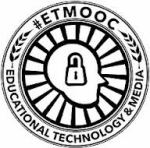With the confirmation of flipped classrooms and learning analytics as topics that are “very likely to drive technology planning and decision-making” in higher education this year, the latest Horizon Report from the New Media Consortium (NMC) once again provides anyone involved in training-teaching-learning with the sort of insights, inspiration, and resources we have come to expect from the Horizon Project. And if we look a little deeper into the expanded information provided in the latest report, we have the most comprehensive overview of key trends, significant challenges, and developments in educational technology ever produced by NMC.
 Having been lucky enough to have served on Horizon Report advisory boards for four years now, I’ve been as fascinated by what does not overtly show up in each of the published reports as what does. NMC staff annually creates and maintains master lists of tracked technologies that remain accessible on the Horizon Report wiki, but those who rely solely on the reports rather than exploring the wiki have missed a lot—up to now.
Having been lucky enough to have served on Horizon Report advisory boards for four years now, I’ve been as fascinated by what does not overtly show up in each of the published reports as what does. NMC staff annually creates and maintains master lists of tracked technologies that remain accessible on the Horizon Report wiki, but those who rely solely on the reports rather than exploring the wiki have missed a lot—up to now.
Recognizing the gold mine of data available on the wiki, report co-principal investigators Larry Johnson and Malcolm Brown, along with lead writer/researcher Samantha Adams Becker, have given the current list (which includes consumer technologies, digital strategies, Internet technologies, learning technologies, social media technologies, visualization technologies, and enabling technologies) far more prominence by including it on p. 35 of the 2014 Higher Education Edition of the continuing series. And while the near-term (one-year) horizon, as usual, focuses on the two most prominent technologies driving our work, it also feels more comprehensive through the display of the entire table of topics. When we take one further interim leap and look at the results of the 2014 Advisory Board preliminary voting, we add Bring Your Own Device and massive open online courses (MOOCs) to the near-term (one-year) field of study and spot an overall theme: we’re continuing to look for creative ways to engage learners (e.g., through the flipped classroom model), to support them at their moment of need (through the effective use of learning analytics), to make it easier for them to learn (through the use of their own tech tools), and even finding ways to allow them to participate in setting their own learning goals (through connectivist MOOCs) within the broad framework we design and employ in some of our most interesting learning endeavors.
Johnson, Brown, and Becker, in fact, explicitly call our attention to this broad theme at the beginning of the “Flipped Classroom” section of the report (p. 36): “The flipped classroom model is part of a larger pedagogical movement that overlaps with blended learning, inquiry-based learning, and other instructional approaches and tools that are meant to be flexible, active, and more engaging for students.”
We are reminded that everyone in training-teaching-learning is affected by this this model in that it suggests a continuing transition in roles “from lecturer to coaches.” Furthermore, it provides a model many of us are using even without fully embracing the flipped classroom model—incorporating readily-available online videos and other online resources into our face-to-face and online learning endeavors. Among that ever-increasing array of readily available resources are Khan Academy and TED-Ed videos, the UK-based Jorum open educational resources—OER—site from the University of Manchester, and the Indian School of Business in Mumbai, and numerous others are just a Google search away, as I’ve repeatedly confirmed when creating links to learning resources for the adult learners I serve in online as well as onsite settings.
![]() The 2014 Horizon Report > Higher Education Edition provides plenty of resources for any of us interested in learning more about the flipped classroom model. The “6 Expert Tips for Flipping the Classroom” article from Campus Technology is a great starting point; it includes the following recommendations: “use existing technology to ease faculty and students into a flipped mindset”; “be up front with your expectations”; “step aside and allow students to learn from each other”; “assess students’ understanding for pre-class assignments to make the best use of class time”; “set a specific target for the flip”; and “build assessments that complement the flipped model”—wonderful tips that can be adapted and should, at some level, be in every trainer-teacher-learners’ toolkit.
The 2014 Horizon Report > Higher Education Edition provides plenty of resources for any of us interested in learning more about the flipped classroom model. The “6 Expert Tips for Flipping the Classroom” article from Campus Technology is a great starting point; it includes the following recommendations: “use existing technology to ease faculty and students into a flipped mindset”; “be up front with your expectations”; “step aside and allow students to learn from each other”; “assess students’ understanding for pre-class assignments to make the best use of class time”; “set a specific target for the flip”; and “build assessments that complement the flipped model”—wonderful tips that can be adapted and should, at some level, be in every trainer-teacher-learners’ toolkit.
 Equally useful for anyone involved in the learning process—not just those exploring flipped classrooms—is “A Review of Flipped Learning.” This report from the Flipped Learning Network (an online resource with a founding board that includes Aaron Sams and Jonathan Bergmann, two educators who are considered to be among pioneers in the flipped classroom model even though they openly acknowledge that the term comes from others) further immerses us in the topic in ways that provide plenty of inspiration for adopting (or adapting) flipped classroom practices to a variety of learning environments. Hardcore flipped-classroom fans will find additional information in Flip Your Classroom: Reach Every Student in Every Class Every Day, the book that Sams and Bergmann produced in 2012.
Equally useful for anyone involved in the learning process—not just those exploring flipped classrooms—is “A Review of Flipped Learning.” This report from the Flipped Learning Network (an online resource with a founding board that includes Aaron Sams and Jonathan Bergmann, two educators who are considered to be among pioneers in the flipped classroom model even though they openly acknowledge that the term comes from others) further immerses us in the topic in ways that provide plenty of inspiration for adopting (or adapting) flipped classroom practices to a variety of learning environments. Hardcore flipped-classroom fans will find additional information in Flip Your Classroom: Reach Every Student in Every Class Every Day, the book that Sams and Bergmann produced in 2012.
When we turn to the complementary theme of learning analytics—using increasingly sophisticated tech tools to determine where our learners are thriving and where they are struggling—we see another aspect of what is being fostered through flipped classrooms: engagement with learners in ways that benefit learners and make all of us better in our work as learning facilitators. Among the links from the report is one leading to a video by George Siemens (“The Role of Learning Analytics in Improving Teaching and Learning”) from a teaching and learning symposium held in March 2013. Jumping beyond the pages of the Horizon Report, we find a great summary of “The Growth of Learning Analytics” from Training magazine; a list of “6 Things You Should Know About Learning Analytics” from the Office of the Chief Information Officer at The Ohio State University; and a variety of articles through the EDUCAUSE Learning Analytics page online.
And when we return to the beginning of the Horizon Report > 2014 Higher Education Edition, we’re reminded why the topic of learning analytics is important to all of us: it’s another quickly-evolving educational application that leverages “student data to deliver personalized learning, enable[s[ adaptive pedagogies and practices, and [helps us] identify learning issues in time for them to be solved.”
NB: This is part of a series of articles exploring the latest Horizon Report. Next: On the Mid-Range Horizon—3D Printing and Games/Gamification



 Posted by paulsignorelli
Posted by paulsignorelli 







 The fabulous learners in the six-part completely-online two-hours-per-session train-the-trainer series I’m currently facilitating are increasingly adapting to their roles as
The fabulous learners in the six-part completely-online two-hours-per-session train-the-trainer series I’m currently facilitating are increasingly adapting to their roles as  Several elements were in place to make that a successful endeavor for all of us. 1) All sessions are highly interactive. 2) Each session takes a different approach to using our virtual learning space within Zoom (e.g.,
Several elements were in place to make that a successful endeavor for all of us. 1) All sessions are highly interactive. 2) Each session takes a different approach to using our virtual learning space within Zoom (e.g.,  How it all played out—quite well, actually—will eventually be visible through a recording of the session (to be posted on the California Library Association’s
How it all played out—quite well, actually—will eventually be visible through a recording of the session (to be posted on the California Library Association’s  So, when I was invited in essence to become a co-conspirator (we, as a group, weren’t yet using that term) with Staff Inservice Day committee members at
So, when I was invited in essence to become a co-conspirator (we, as a group, weren’t yet using that term) with Staff Inservice Day committee members at 











